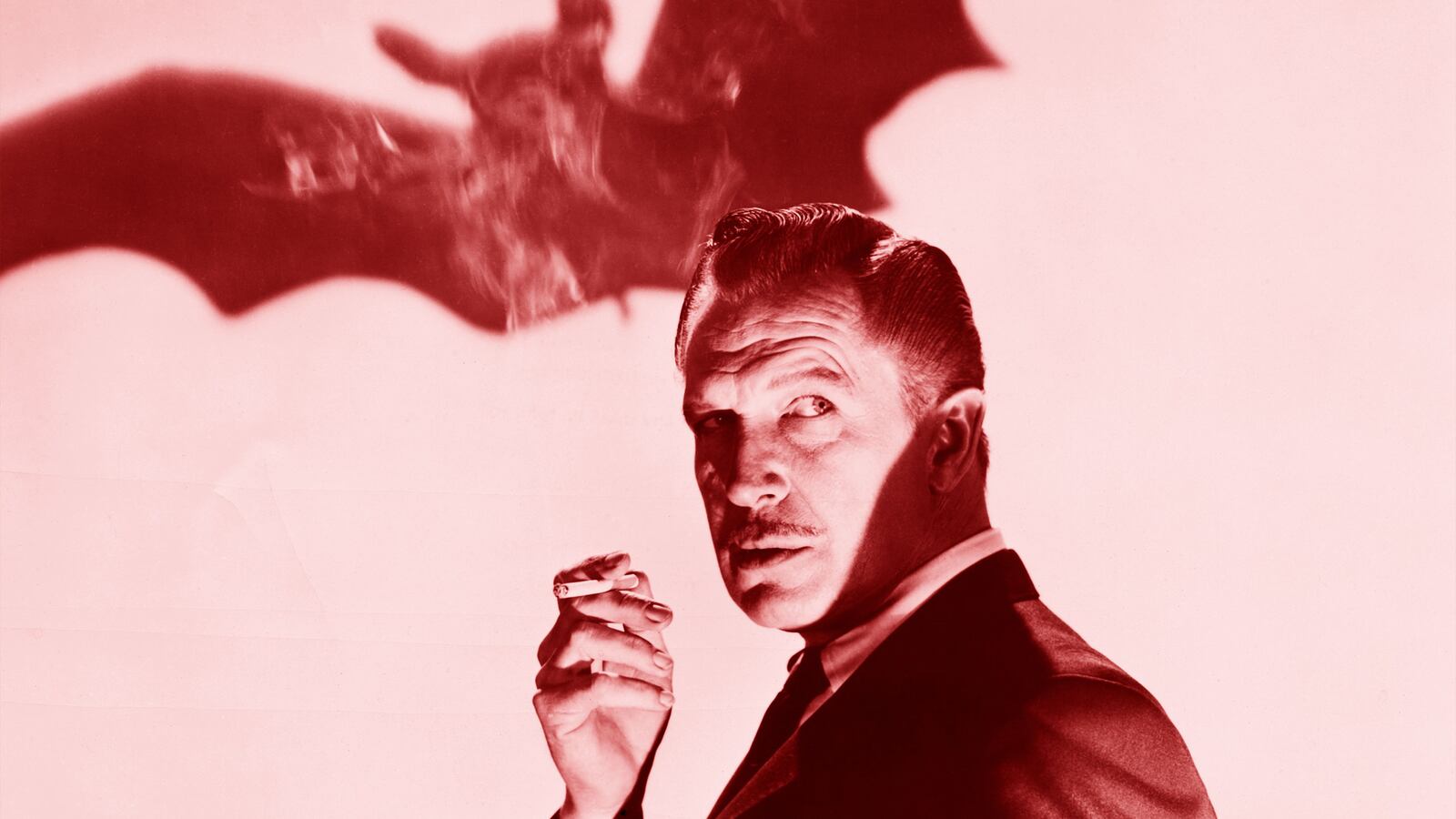Vincent Price is the patron saint of Halloween. The star of some 20 horror films—including Theater of Blood, Bloodbath at the House of Death, and The Masque of the Red Death—Price had a face that was as finely honed as a fillet knife, with angular hairline, sharp jawbone, and Gothically arched eyebrows.
And that voice: deep and resonant, with an uncanny ability to sound simultaneously disquieting and reassuring. He could also punctuate his lines with a laugh that brimmed with menace and bad-omen, like a pipe organ in need of attention. You’ve heard his laugh, possibly without realizing it; it’s the cackle that concludes Michael Jackson’s song “Thriller.”
But Price also had a less terrifying and more caloric side. He was a gourmand, a lover of foods from the world over and a crusader who believed that if he could enjoy exotic dining, then anyone could, and should. (Perhaps it was genetic: his grandfather, also named Vincent Price, was the inventor of Dr. Price’s Baking Powder, which was said to be the first made with cream of tartar, as well as owning patents for things like extract of vanilla and lemon and some breakfast cereals.)

In 1965, he published A Treasury of Great Recipes, which he wrote with his wife, Mary. It was an immediate nationwide sensation, selling 50,000 copies in the first year alone. It wasn’t just the novelty factor generating sales. “I believe this will become a collector’s item for those of us who love to thumb through cookbooks and read them as others read novels,” wrote the food editor of the Dallas Morning News when it came out. (A 50th anniversary edition was published in 2015.) Price went on to author other influential cookbooks, three of which have been republished over the past three years—the most recent just this month, with the re-issue of Cooking Price-Wise: A Culinary Legacy.
Price and his wife never claimed to be talented or inventive cooks. “I didn’t invent the recipes in this book,” Price wrote in the introduction to Cooking Price-Wise. “I collected them.” The Prices would search for memorable dishes on their frequent travels, often through Europe. In internet terms, they would have been considered aggregators.
“The purpose of this book is to invite you to dine, wine, break bread with us, to partake with us our favorite dishes gleaned from kitchens all over the world,” they wrote. “Sometimes… we got home and it occurred to us, ‘How lovely it would be if we could have a meal such as the one we had in that tiny old restaurant in Spain’… And that is what we really want to try to do for people with this book.”
In short, they were creating palatable postcards—they’d bring back recipes, and serve them to guests at home, and regale them with tales of the original discovery.

A Treasury of Great Recipes also entranced Christopher “Bull” Garlington, a Chicago writer and arguably the biggest fan of Price’s writing, when he was just eight years old. “There was this whole world that I didn’t realize existed,” he says. “I always thought Fat Boys Barbecue and Red Lobster was as good as it got.”
Garlington’s father, a pipefitter then in Birmingham, Ala., saw the book in a shop window and bought it on a whim. “He was immediately, like I’m going to cook everything in this book,” Garlington said. “But he didn’t. He cooked maybe one thing.”
Then a few years ago, Garlington and his wife, Colleen, were watching the movie Julie & Julia, in which an author sets out to cook every dish in Julia Child’s seminal cookbook. Partway through the film his wife punched him in the shoulder and said, “you should do that.” Garlington pointed out that somebody had already done that. “In fact, we’re watching her movie right now.”
But it planted a seed, and he got thinking about completing his father’s unfinished project—well, really, unstarted—of cooking his way through Vincent Price’s book. He hauled out the coffee-table sized A Treasury of Great Recipes, which he’d inherited after his father died in 2003, and launched a blog called Eating Vincent Price.
Before he could begin he faced a pretty major problem: “I don’t know how to cook very well,” Garlington says. So he shifted gears, sending out a letter to chefs around Chicago, none of whom he knew personally. “The idea was that they could come to my house and cook from the book and I would write about it.”
He received one response. “I’m in,” wrote Efrain Cuevas of Clandestino Supper Club. The pair ended up hosting a pop-up, which was held in 2012 in a derelict Chicago convent which had plenty of broken windows but no kitchen. (It seemed an appropriate setting given Price’s film roles.) They served upwards of 40 guests a sampling of Price dishes, including chicken and grapes (“a sort of Spanish thing,” Garlington says). The dinner was a hit—and they continue to host a series of others, getting local press for both the blog and the dinners.
Garlington and Cuevas would go on to do eighteen pop-ups together before Cuevas stepped aside. Garlington then partnered with another chef, Aram Reed, and further expanded with help of mixologist and bar consultant Lauren Parton. For one event, they invited Price’s daughter, Victoria, to attend and tell stories about her father and his cooking.
Victoria, a writer, artist and art consultant, has been involved in the recent re-issue of her father’s books, contributing recollections and prefaces. The recipes her parents collected have shown surprising endurance, and the “exotic” cuisines they embraced a half-century ago are comfort food for many kids today.
“People always seem afraid of food from other countries,” Price wrote in the introduction to Cooking Price-Wise, noting that “they’ll eat spaghetti, for instance, if it comes out of a a tin, chopped up short and smothered in tomato sauce, but the real thing, no matter how available it is, is quite beyond them.” Today, canned spaghetti is about the last thing anyone wants to eat—more common are marsala and pirogis and Mexican moles and other dishes for which Vincent Price paved the way.
Garlington is still hosting Vincent Price dinners around Chicago, and remaining true to the actor. (“Vegetarians and vegans are welcome,” the website notes, “but given that The Treasury doesn’t even mention vegetables until page 49, your experience of our dinner will be less than spectacular.”) In traditional pop-up fashion, he notifies his email subscribers about upcoming dinners, which are priced from $125 to $140 per head.
“He wanted readers to be able to entertain with style,” Garlington says. “He was a little Martha Stewart-y. He was like, step up your game! You can do this! Here’s a recipe to blow your friends away.”






